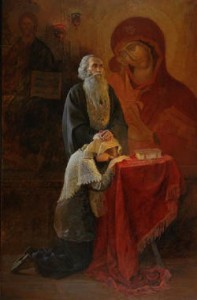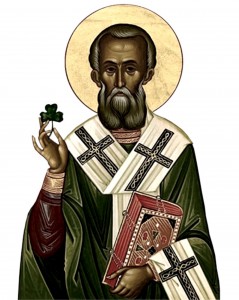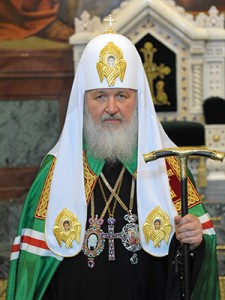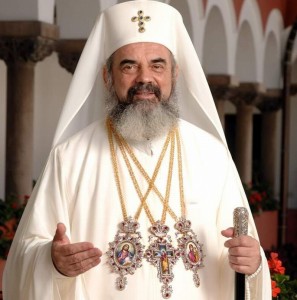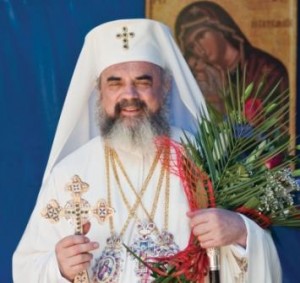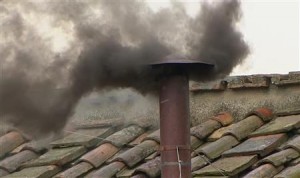
The Gospel of Matthew 25:31-46
The Lord said, “When the Son of man comes in his glory and all the holy angels with him, then he will sit on his glorious throne. Before him will be gathered all the nations, and he will separate them one from another as a shepherd separates the sheep from the goats, and he will place the sheep at his right hand, but the goats at the left. Then the king will say to those at his right hand, ‘Come, O blessed of my Father, inherit the kingdom prepared for you from the foundation of the world; for I was hungry and you gave me food, I was thirsty and you gave me drink, I was a stranger and you welcomed me, I was naked and you clothed me, I was sick and you visited me, I was in prison and you came to me.’ Then the righteous will answer him, ‘Lord, when did we see you hungry and feed you, or thirsty and give you drink? And when did we see you a stranger and welcome you, or naked and clothe you? And when did we see you sick or in prison and visit you?’ And the King will answer them, ‘Truly, I say to you, as you did it to one of the least of these my brethren, you did it to me.’ Then he will say to those at his left hand, ‘Depart from me, you cursed, into the eternal fire prepared for the devil and his angels; for I was hungry and you gave me no food, I was thirsty and you gave me no drink, I was a stranger and you did not welcome me, naked and you did not clothe me, sick and in prison and you did not visit me.’ Then they also will answer, ‘Lord, when did we see you hungry or thirsty or a stranger or naked or sick or in prison, and did not minister to you?’ Then he will answer them, ‘Truly, I say to you, as you did it not to one of the least of these, you did it not to me.’ And they will go away into eternal punishment, but the righteous into eternal life.”

Today’s Gospel brings us face to face with reality, the reality that all of us will one day be judged for the things we have done and for the things we have not done. This is a turning point in the ministry of Jesus. The cross is before Him and he now begins to talk about the end of not only His ministry, but the end of all.
The standard by which all of us will be judged is that of uncalculated mercy towards all.
Mercy is a fascinating word. It comes to us from Middle-English and French “Merci” “Thanks” and from the Latin “Merced” the price paid, or wages. Mercy is what we do for others, and we do it because someone has already paid the price, with His very life.
We see in this Gospel and emphasis on the works of faith. These are the exact works that the reformers said were not necessary for salvation, and although I would agree with them I would say that these works are the natural outgrowth of that saving faith. A saving faith will always produce righteous works because a person of faith cannot just stand by and watch the suffering of others, they must get in there and get their hands dirty. The actions that we take, the works of mercy that we perform are what reflect our inner state. We do not do these things for our own glory, in fact, we should do them without any expectation of thanks, but we do them for the “least” among us.
Today we get a glimpse of what the final judgment will be like. We see a separation of the sheep and goats. On one hand are those who have done and on the other hand we have those who have done not. We have people of action, and we have people of inaction. It’s not so much about what we do it’s about not squandering the gifts that God has given us. It’s about looking at another human being, as an Icon of Christ, and having compassion on them. It’s about forgiveness and it is about doing something.
At first glance, the Gospel is asking us what we have done for the physical needs of people, have we fed them, have we clothed them, did we visit them when they were sick or in prison. But, it needs to go much deeper than that. What are we doing for the spiritual needs of others? This is not just aimed at us as individuals but as a community.
Are we truly feeding people with the word of God? Do we live our lives in a way that will bring people to the faith, and that will bring glory to God? Are we helping people to be clothed in righteousness and are we clothed in righteousness? Are we doing all we can, or are we doing just enough to get by?
We are standing in the doorway of one of the most solemn times of the Church year. We are getting ready to embark on a time of spiritual renewal, that is we take the time, truly take the time we will be changed forever.
When a person enlists in the military, the first phase of their training is basic training. Depending on the branch of service one chooses the time of basic training can vary. The entire philosophy of basic training is to break you down so that you can be built back up. This happens not only physically, but it happens mentally. The old person has to die so that the new and improved person can be born.
During the weeks of training, the recruit is taxed physically with endless pushups and other physical exercises, but the rookie is also taxed mentally with constant exercises so that doing certain tasks just become natural. Great Lent is the same way.
During the six weeks of “spiritual boot camp” we will be broken down physically, mentally, and spiritually that is if we try.
Last week I was interviewed by a reporter for the Worcester Telegram. She was doing a story on people who give up Facebook and other forms of social media for Lent. She asked me my thoughts on the whole thing and essentially I said giving up something is useless if we do not change along with it. Far too many people pay Lent lip service by giving up soda or coffee, or perhaps chocolate only to return to that same behavior when Lent is over. The whole reason we sacrifice something, and please if you are going to give something up make it a sacrifice, is to make a change in our lives. I have said this to you before if you are the same person at the end of Lent as you were at the beginning it did not work! We have to be different, we are called to be different during this time of the year, and it has to mean something otherwise we are just paying it lip service.
We talk a lot about abstinence this time of year. As you are well aware, the Orthodox Church calls us to an extremely strict sense of abstinence during Great Lent. For some of us it is easier than others, we are all in a different place on our journey, and we are all called to do the best we can. However, we have to do something that is different regarding food. We abstain from certain foods not as punishment but so we can make an internal change to our lives. Real changes comes from inside, that is where the hard work is done.
These approaching six weeks are supposed to be difficult, they are supposed to be a struggle, and they are supposed to be different. I am not going to tell you what to do, but if you want some suggestions just ask.
Whatsoever you do to the least of these, you do to me! Whatever it is that we do, or that we do not do, to those who are spiritually hungry and thirsty, or those or are physically hungry or thirsty we do to Christ Himself. This is not only others but ourselves.
We have an opportunity to make some real change in our lives and in the lives of others. During Great Lent the whole feeling of the Church changes, these past weeks the Scripture readings have been calling us to a sense of watchfulness but also of repentance. We have an opportunity over the next weeks to strengthen our faith life we just have to make the decision that these weeks are going to be different, and we have to make the decision that we are going to be different.
The end of today’s Gospel clearly points to what will happen at the Last Judgment. Those who have not will go away into everlasting punishment and those who have to eternal life. Where do you want to go?

